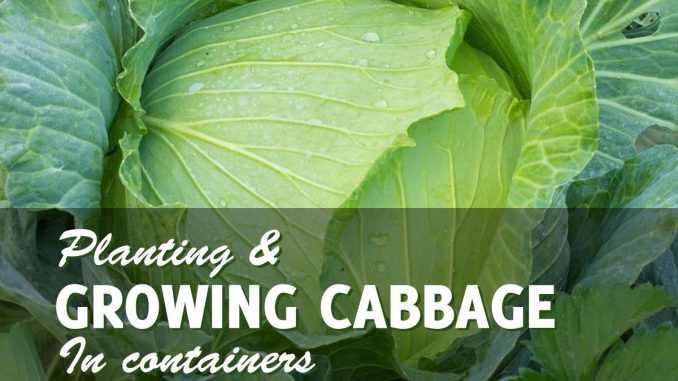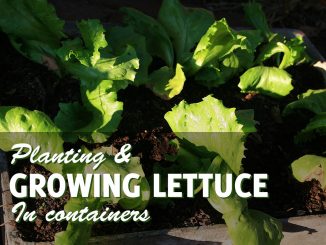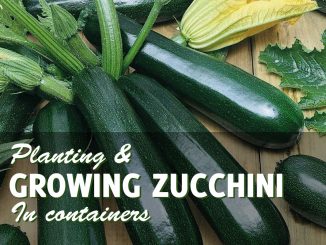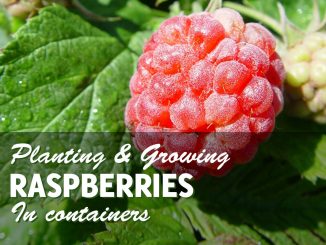
Cabbage is a great vegetable to grow your garden, and as a biennial crop, growing cabbages in containers can be very rewarding and also challenging. With the right amount of care and attention, you will soon be producing your own container cabbage patch in no time.
Before You Start Growing Cabbage in Containers
Cabbages are commonly termed by the season (i.e. summer cabbages, spring cabbages). This means they are harvested around the season by which they are named. You can produce your own seasonal cabbages by carefully calculating the time when you should sow your cabbage seeds.
- For summer cabbages, your seeds must be sowed around January to April. You will then harvest your cabbages from May to July.
- For autumn or winter cabbages, sow your seeds around 28 weeks before your expected harvest date.
- Spring cabbages are produced when you sow seeds around July and August. Harvest your crops from October to January.
- If you want to harvest your cabbages all year round, you can sow seeds from February to July and expect to harvest from June to November.
With these guidelines in mind, let learn how to grow cabbages in containers.
Picking the Right Pot or Container to Grow Cabbage
For growing cabbages in containers, your pot must have a diameter of at least 12 inches or more. While a container that is 8 inches deep will work, I recommend a depth of 12 inches or more. Place enough holes at the bottom to aid in draining excess moisture to prevent root damage. You can also aid in draining excess water by lining the bottom with a thin layer of small pieces of terra cotta pots or small pebbles and stones. I have also had good luck using these garden pot bags, which seem to help with drainage and are inexpensive for the size!
Preparing Your Potting Mix to Grow Cabbage in Containers
Your soil must be light and loamy mixed to allow moisture retention while effectively draining out excess moisture. A pH of 6.5-7.5 would be ideal for growing cabbages in containers. You can change the pH of an acidic soil by adding lime powder. Mix the soil with mature compost before you start planting to encourage growth. Keep in mind that mature compost is needed to prevent the crops getting affected by the unfinished decaying process.
Cabbage Seeds for Containers
Buy seeds that have been treated with hot water as they have better protection from fungal diseases, viral diseases, and black rot. If you wish to have seasonal harvests, sow your seeds according to the schedule listed in the starting section. To grow the best-tasting cabbage, it is best to sow your seeds in July or August as cabbages are cool-weather crops. Others suggest that you start growing cabbages in containers by sowing the seeds once there is no more danger of an impending hard frost. One of my favorite cabbage varieties is the Early Jersey (picture below) from “David’s Garden”.
Plant your seeds ¼ inch to ½ inch deep with a distance of 1 inch between each seed. Afterward, cover them lightly and spray them with a fine mist moisten the soil while preventing the seeds from getting washed away. Expect your seeds to germinate within 7-14 days from the time of sowing. Thin your crops so that they will have a distance of 18-14 inches between them when four true leaves have formed. If you only have a 12-24 inch container, leave only one crop behind. You mustn’t crowd your crops when growing cabbage in containers to prevent them from getting ill or be prone to infection. You must remember to water your plants consistently at the start of the germination process.
Care for Container Cabbage
Watering
The tricky part in caring for cabbages is to keep the moisture at an adequate level. Too much or too little water can cause bolting while you are growing cabbage in pots. You can prevent this by using row covers during very hot periods and always maintaining a regular watering schedule.
Once your cabbages form a head, slowly reduce the amount of water, you give your plants to prevent your crops from splitting heads. It is possible to reduce water intake by giving the head a gentle twist to break the roots.
Fertilizing Cabbage Grown in Containers
Keep your plants healthy and rich in color by adding a fertilizer of 10-3-3 to keep the nourishment of your soil. However, it is best to side-dress cabbages with mature compost or compost manure. You can also give them compost tea or an organic liquid fertilizer twice a week instead if there is none available. A pale crop means the soil is lacking nitrogen.
Pests & Diseases That Affect Growing Cabbage in Containers
Several diseases and pests can devestate cabbages. A fine netting to serve as a cover once your crops have formed six true leaves can help deter pests and insects. Always manually inspect your crops by lifting each leave and looking underneath for caterpillar eggs and larvae. Hand-pick the caterpillars out and squish the eggs to prevent them from harming your plant.
Spray leaves with compost tea to help control diseases and caterpillar infestation. Compost tea has many beneficial bacteria, including Bacillus thuringiensis, which is effective in preventing the dreaded cabbage loper. Using a fine-spray handheld mister along with a neem oil mixture is also effective.
Aphids are also a serious problem with cabbages. They can easily be sprayed off with the use of a garden hose to prevent them from weakening your plant. If the infestation is severe, you can buy sprays from your local gardening store to eliminate them.
Prevent cabbage fly by placing a collar at the base of your plant’s stem. They can be bought or easily made from a piece of old carpet. You can also deter them by buying insecticide sprays, but it would be better if you place a garlic clove between your crops to put them off.
Harvesting Your Cabbage
Harvest your crops within 80-180 days. This harvesting period depends on the type of cabbage you have used when growing cabbages in containers — harvest by pulling the outer leaves from the stem.
If you have a head, cut it off from the base just below all the collection of the leaves. To make things simple, just pull out the entire plant, head, leaves, stems, and roots from the ground. Bear in mind, though, that you will no longer have another harvest once you do this.
Now that you know the basics, you can now start growing cabbage in containers so you will not have to endure those tasteless heads that you get from the grocery store. If you are looking for more tasty vegetables you can grow in pots then have a look at our guide on how to grow asparagus in containers!





Be the first to comment